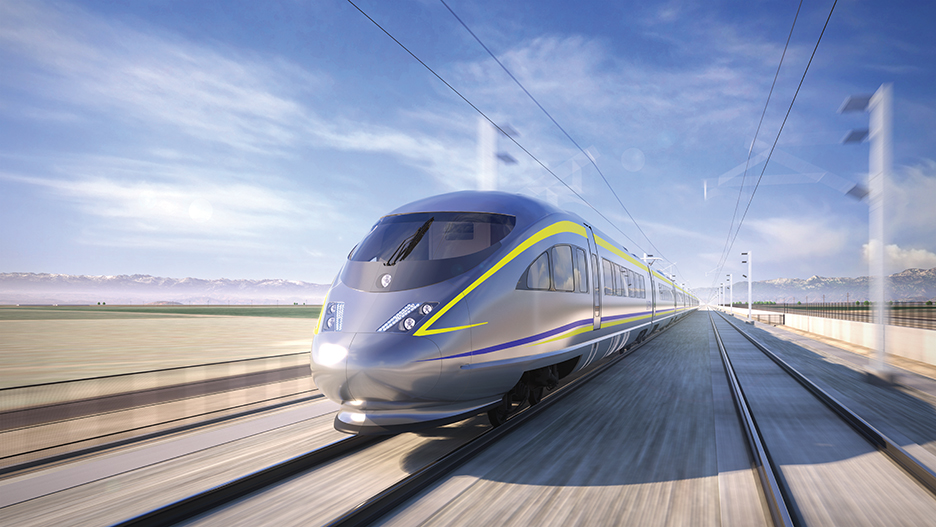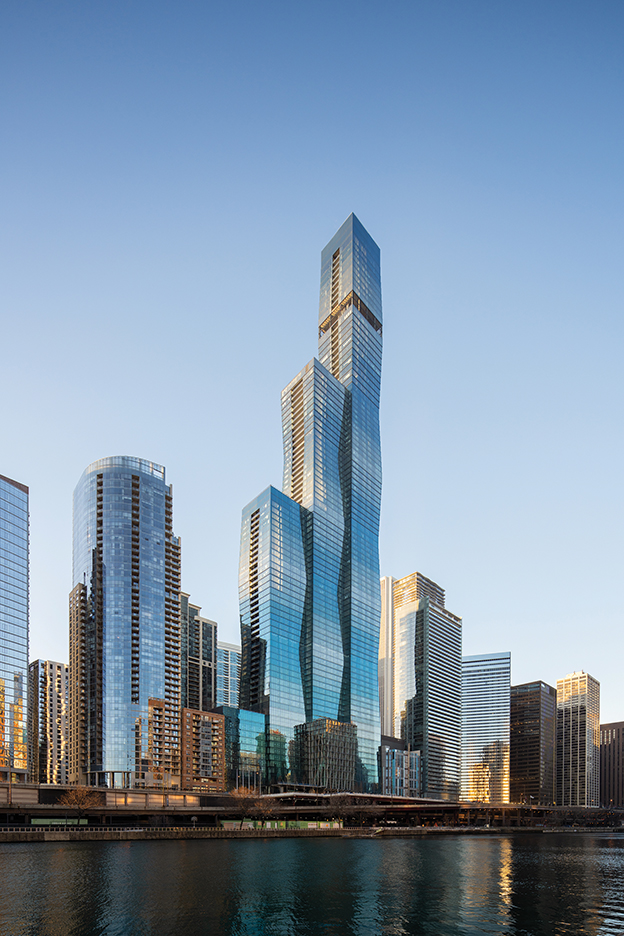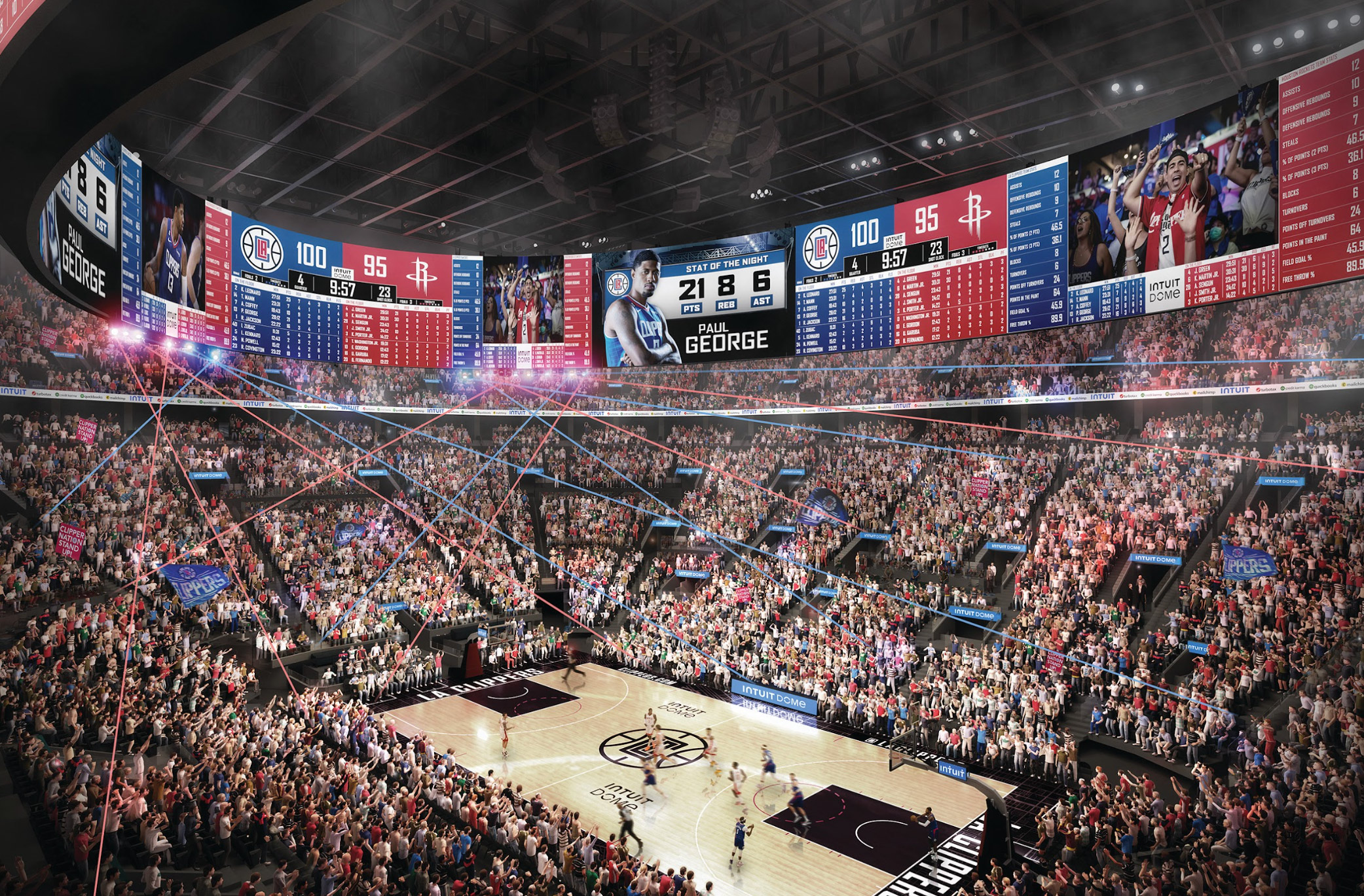Some of the most dramatic structures currently under construction — multibillion-dollar projects dedicated to transportation, entertainment and sustainability — will reshape the skylines of American cities while enhancing our quality of life. A selection of transformative projects, some of which have been decades in the planning process, are presented here.
Complex Creations
Christian Brockmann, Ph.D., a professor of construction engineering at the University of Utah, is a specialist in megaprojects and author of Advanced Construction Project Management: The Complexity of Megaprojects. The book cites endeavors from the Pyramids of Giza and Machu Pichu to the Sydney Opera House as megaprojects sharing similar challenges despite being erected in vastly different eras. Some attempt to define modern megaprojects strictly by cost (e.g., $1 billion-plus), but Brockmann insists they be defined by complexity, novelty and use of specific resources, the latter referring to equipment designed specifically for a project.
“The extreme complexity of these projects stretches our cognitive abilities, skills and experience, and when you push the limits of what you can do, you have to accept the possibility of failure,” he explains.
Notes from the Symphony
Professor Brockmann reports that politics regularly interferes with engineering and that the media often shapes public opinion of a project, especially when initial projections of benefit, budget or delivery date are overly ambitious. As an example, he offers Elbphilharmonie, the striking symphony hall in Hamburg, Germany, which experienced a cost overrun of approximately $700 million. “The press was very critical of the project, as it was far beyond budget and time, but when it finally opened the press and public became very positive,” says Brockmann, who notes the venue’s annual economic impact to the city of Hamburg has been quite beneficial.
Emphasizing the value of persistence and improvisation, the megaproject expert states, “Every situation is different and you have to develop a new approach for each one.”
Silver Bullets
Around the world, high-speed rail megaprojects are reimagining a mode of transportation that was viewed as obsolete not terribly long ago. One of the reasons palatial train stations have been repurposed as museums, hotels or shopping malls is that passengers abandoned trains when air travel emerged. But with bullet trains whisking passengers at more than 200 miles per hour, rail service is experiencing a renaissance.
In Asia and Europe, where governments made big bets on high-speed rail decades ago, this form of intercity transportation is ubiquitous. America finally gets into the game with projects moving forward in Florida, Texas and California. The Golden State’s high-speed rail project is so overbudget and behind schedule that many voters who initially favored it have lost interest. But when completed, the $100 billion project will zip passengers at speeds that will be competitive with air travelwhile leaving a negligible carbon footprint.
Theater in the Round
Nearing completion on the Las Vegas Strip is the MSG Sphere, an ambitious 17,500-seat theater developed by Madison Square Garden Entertainment Corporation. When it opens for concertgoers in late 2023, the inaugural act in the largest spherical structure in the world will be U2. The projected price tag of the MSG Sphere, whose construction was disrupted by the pandemic, has reached approximately $2.2 billion.
The “exosphere” (outer shell) will feature a digital canvas that morphs between themes, depending on the season or occasion, while the theater inside will be the first large-scale venue to utilize multi-sensory storytelling to wow concertgoers. It will possess the world’s highest resolution digital screen, 164,000 audio speakers and cutting-edge 4D technologies, including scents and breezes. David Dibble, CEO of MSG Ventures, has stated, “With MSG Sphere, we’re creating an entirely new platform for immersive experiences.”
Bridging Borders
When completed next year, the $5.7 billion Gordie Howe International Bridge will span the Detroit River, a strategic commercial connection between Detroit, Michigan and Windsor, Ontario. The project’s graceful design reflects a contemporary, minimalist aesthetic and its name honors one of hockey’s most legendary players. The project will streamline the flow of goods and passengers at this critical convergence of Canadian and American interests. “Inspiration for the design was found in the waters of the Detroit River with the rolling waves conveying the senses of passage and gateway,” explains Heather Grondin, vice president, corporate affairs and external relations of the Windsor-Detroit Bridge Authority. She adds, “The cable-stayed bridge design is a modern and elegant form with a tower shape inspired by the curvature of a hockey stick in a slap shot — a nod to Gordie Howe.”
Links Unlimited
Opening this spring, steps from the new Professional Golfers Association (PGA) headquarters outside Dallas, is the Omni PGA Frisco Resort. Two 18-hole championship courses will be accompanied by a lighted par three course and two-acre putting green, complemented by diverse dining, retail and entertainment experiences.
The hotel component will feature 500 guest rooms and suites, 10 four-bedroom ranch houses, a rooftop infinity pool and full-service spa. With versatile indoor-outdoor spaces accommodating special events, the $520 million complex represents a true golfer’s paradise in the Lone Star State. “Omni PGA Frisco is an ambitious new resort concept for the state of Texas,” says Jeff Smith, vice president and managing director for the Omni PGA Frisco Resort. He adds, “The sprawling complex provides an unparalleled experience for those who are advanced players, new to the game, and everything in between.” Another megadevelopment in Frisco, Texas, was recently announced: a new theme park from Universal Studios.
Windy City Glam
While the Omni PGA Frisco Resort rambles over 600 acres, the St. Regis Chicago soars 101 stories in a city already home to iconic skyscrapers. Clad in undulating glass, the design is a product of hometown firm Studio Gang, whose founder Jeanne Gang is one of the world’s most prominent female architects. A project of Magellan Development Group, the structure will house luxury condominiums in addition to an elegant St. Regis hotel. Featuring an allocation of green space atop each of its distinct tiers, the building allows greater connectivity with the environment and the city around it.
“The St. Regis Chicago is a work of art and is already a spectacular addition to the Chicago skyline,” maintains Rob Pontarelli, Magellan’s senior vice president of marketing. “The St. Regis Chicago is an architectural wonder inspired by a crystalline form found in nature and serves as Chicago’s premier destination, offering ultra-luxury living, five-star lodging, service and dining,” he adds.
Techy Arena
Major league sports venues frequently rank among the most expensive construction projects in the nation, yet many reflect uninspired designs. However, the Intuit Dome that will be home to the NBA’s Los Angeles Clippers features a memorable, futuristic design that pairs well with SoFi Stadium, also located in the L.A. suburb of Inglewood. And in an era when local taxpayers fund sports arenas, the $2 billion Intuit Dome is privately funded.
Inside, a wraparound, double-sided “halo” display board will feature an immersive digital canvas featuring 38,375 square feet (more than 233 million LEDs), while VIP “courtside cabanas” and “halo suites” will provide the ultimate luxury experience for sports fans and concertgoers. “This is going to be an unbelievable building, a great experience to come into,” states NBA Hall of Famer and Clippers consultant Jerry West.
Made in America
Semiconductor chips are essential to computers and smartphones, as well as automobiles, household appliances and medical devices. Therefore, manufacturing those items domestically — almost 90 percent are currently imported from overseas — is critical to the U.S. economy and national security.
Last year, Congress authorized more than $50 billion to the semiconductor industry, a catalyst for a flurry of announcements by large manufacturers. Intel is spending $20 billion to construct a manufacturing facility in Ohio, while Micron Technology and Qualcomm have also made multibillion-dollar commitments to manufacture advanced chips in the U.S. “Today marks a pivotal moment in the journey to build a more geographically balanced and resilient semiconductor supply chain,” remarked Intel CEO Pat Gelsinger at the Ohio groundbreaking.





